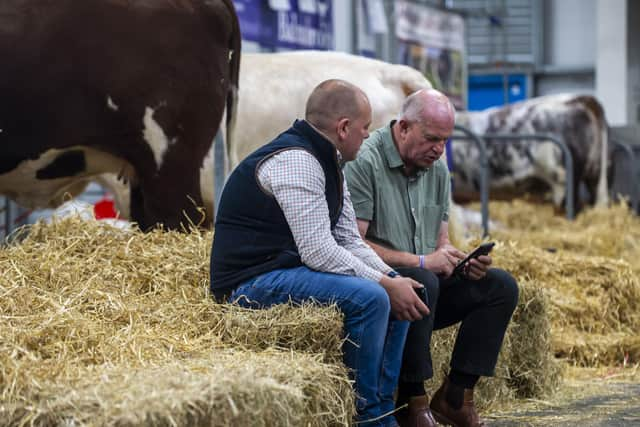Royal Highland Show: Why the first two days felt bittersweet for Scotland's agriculture community
Thursday to Saturday sold out with just days to go before the gates opened.
Speaking to press ahead of the show’s first competition, Royal Highland Agricultural Society of Scotland chief executive Alan Laidlaw said this year was the first time since the Covid pandemic where the event felt like it was back to its normal self.
Advertisement
Hide AdAdvertisement
Hide AdHe said last year the show was still getting back on its feet after having been cancelled two years in a row.


It’s encouraging to see some 200,000 people attending the event will be exposed to, educated on and engaging with rural businesses and campaigners of Scotland’s wildlife and countryside.
The food and drink section of the event alone is an important reminder to us all of the nutritious and delicious food this country has on offer that we don’t all necessarily see day to day walking down the street.
That’s not to mention the inspiring thoughts and ideas coming from some stands where representatives of different rural groups share and discuss how we should be shaping policy to help us do what’s right for the environment in the face of worrying statistics on biodiversity loss and climate change.
The Woodland Trust Scotland stand in the Forestry Arena, as an example, has seen experts, a member of the National Farmers Union Scotland and Deputy First Minister Shona Robinson give talks on the importance of integration of trees on farms and crofts for both environment and owner productivity benefits.
David McKay, from the Soil Association Scotland, said there had been a positive, joined-up approach between farmers and nature groups to see this approach become a reality for farms in the future.
But despite what feels like an almost festive spirit on site, there has also been an air of pure disappointment among some of those key to rural communities in Scotland.
Farmers were hoping the Scottish Government would use what is one of, if not the biggest, agricultural show in Europe and the UK to give more clarity on what will replace their existing EU subsidy scheme, which runs out next year.
Advertisement
Hide AdAdvertisement
Hide AdRural affairs secretary Mairi Gougeon listed more detail on what environment conditions farmers will have to meet to be eligible for future farm payments, but was unable to give them more clarity on what the finances will be in helping them achieve those aims.
There’s an overwhelming sense many farmers attending the show want to do their bit for biodiversity.
But being in the dark about how they will be supported in that transition is delaying their chances to develop sound, nature friendly business plans that will help them manage their land in a way that will help Scotland reach its targets.
With the financial payment system coming to an end next year, which is driving major insecurity in the sector, it makes celebrating the best of Scotland’s agriculture at the Royal Highland Show feel a little bittersweet.
Comments
Want to join the conversation? Please or to comment on this article.
